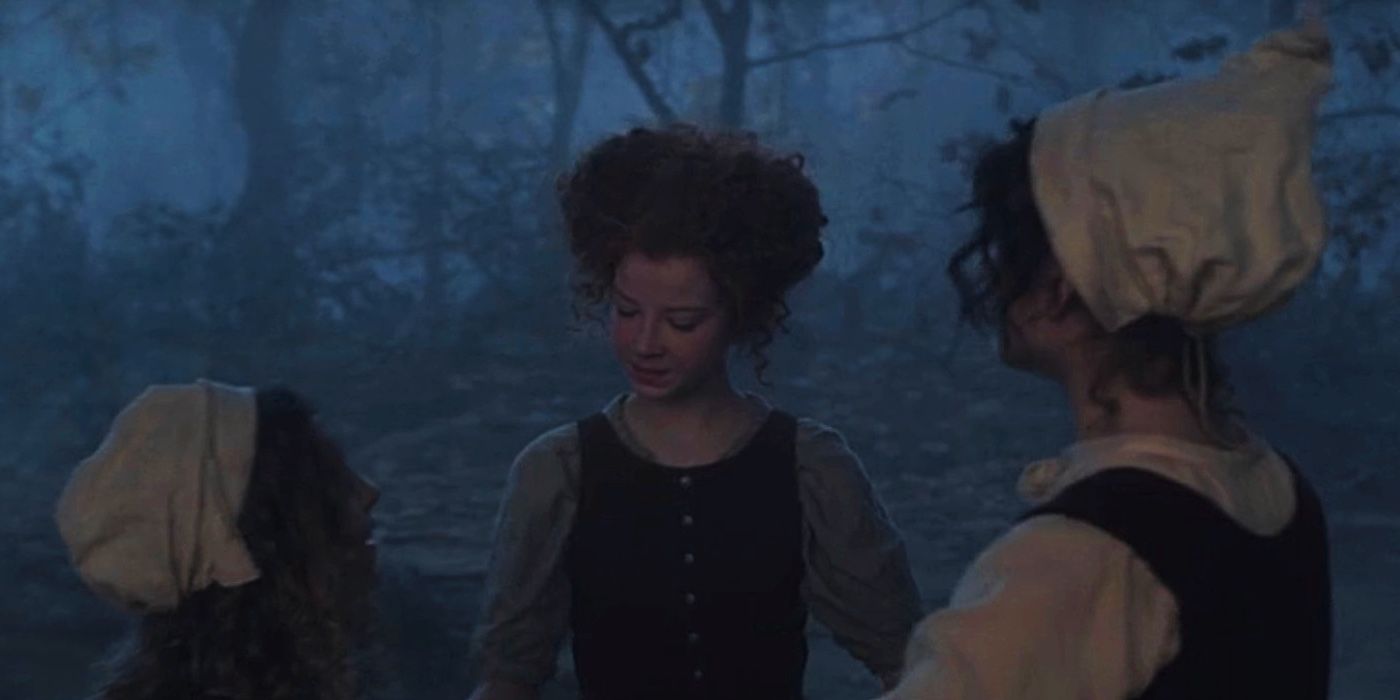Hocus Pocus 2’s prologue explored the origins of the Sanderson sisters, and it changed how audiences saw the witches. In 1993’s Hocus Pocus, Winifred, Mary, and Sarah Sanderson became some of Disney’s most iconic characters. However, Hocus Pocus 2 revealed more about the Sanderson coven and the dark history of Salem that the original movie’s legends left out.
Like the original film, Hocus Pocus 2 begins in 17th-century Salem, however, in this case, Winifred, Mary, and Sarah Sanderson were shown long before their confrontation with Thackery Binx. It’s revealed in the sequel that on Winifred Sanderson’s 16th birthday, the town preacher, Reverend Traske, organized an arranged marriage that the young witch abhorred. Rejecting the church’s authority and admitting to acts they saw as profane (including kissing the mouth of Billy Butcherson), Winifred faced exile from Salem as the town took her sisters away from her. Escaping Traske, the three witches met their magical mentor and became the youth-stealing monsters of myth.
SCREENRANT VIDEO OF THE DAY
Initially seen as pure evil and with more selfish agendas, Hocus Pocus 2 gives the Sandersons a more sympathetic motive. Although not necessarily innocent, the Hocus Pocus sequel provides insight to see where they were coming from and that their plot against the people of Salem wasn’t solely about vanity or demonic worship; it was about injustice. Hocus Pocus 2 wanted its audience to see the Sanderson sisters in another way, not solely as villains but as anti-heroes.
Why The Sanderson Sisters Wanted To Take Over Salem In Hocus Pocus

Originally, it was insinuated that the Sanderson sisters sought revenge after being hanged for witchcraft in Hocus Pocus. The sequel reveals that witches always had a problem with the townsfolk that didn’t begin and end with stealing their children. When meeting the Witch Mother in the wilderness, it’s explained that Salem was a place of power for practitioners and “run by fools.” The Sandersons’ mentor makes it clear; that she wishes to take the land for the witches and its magical properties. The Sanderson sisters wanted to take over Salem to become all-powerful, get revenge against the people who persecuted them, and make sure nobody could separate them again. Hocus Pocus 2 brought up the concept of retaliation countless times, and it became a joke about how long Winifred could hold a grudge. However, in the film’s finale, it was also revealed how much the oldest Sanderson sister cared for the other witches, and their plans were as much about them as they were Traske.
In Hocus Pocus 2, the Sanderson sisters weren’t benevolent, but their motives were sympathetic. Winifred, Sarah, and Mary were tragically cast out and persecuted. Although still having done twisted things related to the dark arts, the Hocus Pocus sequel showed the Sandersons as a caring family who showed love in their own bizarre ways. In the finale, while not redeemed, Winifred got a touching moment when she realized that her quest for revenge and power came with a price she was never willing to pay, the sacrifice of her two sisters. Hocus Pocus 2 never intended for the Sandersons to be heroes or villains; they’re anti-heroes. People that audiences love to hate, but also pity.
Mary, Sarah, and Winifred are still the deliciously wicked witches audiences always loved, but not without their reasons for their actions. The sequel’s origin story recontextualizes the characters of Hocus Pocus and did so in a way that presented them in a new light. Through the three Sanderson sisters, Hocus Pocus 2 showed witchcraft is neither good nor bad, but rather, it comes down to a spellcaster’s intention and the prices they’re willing to pay.
